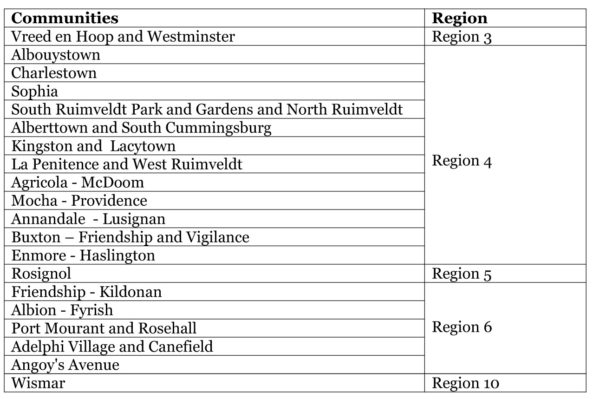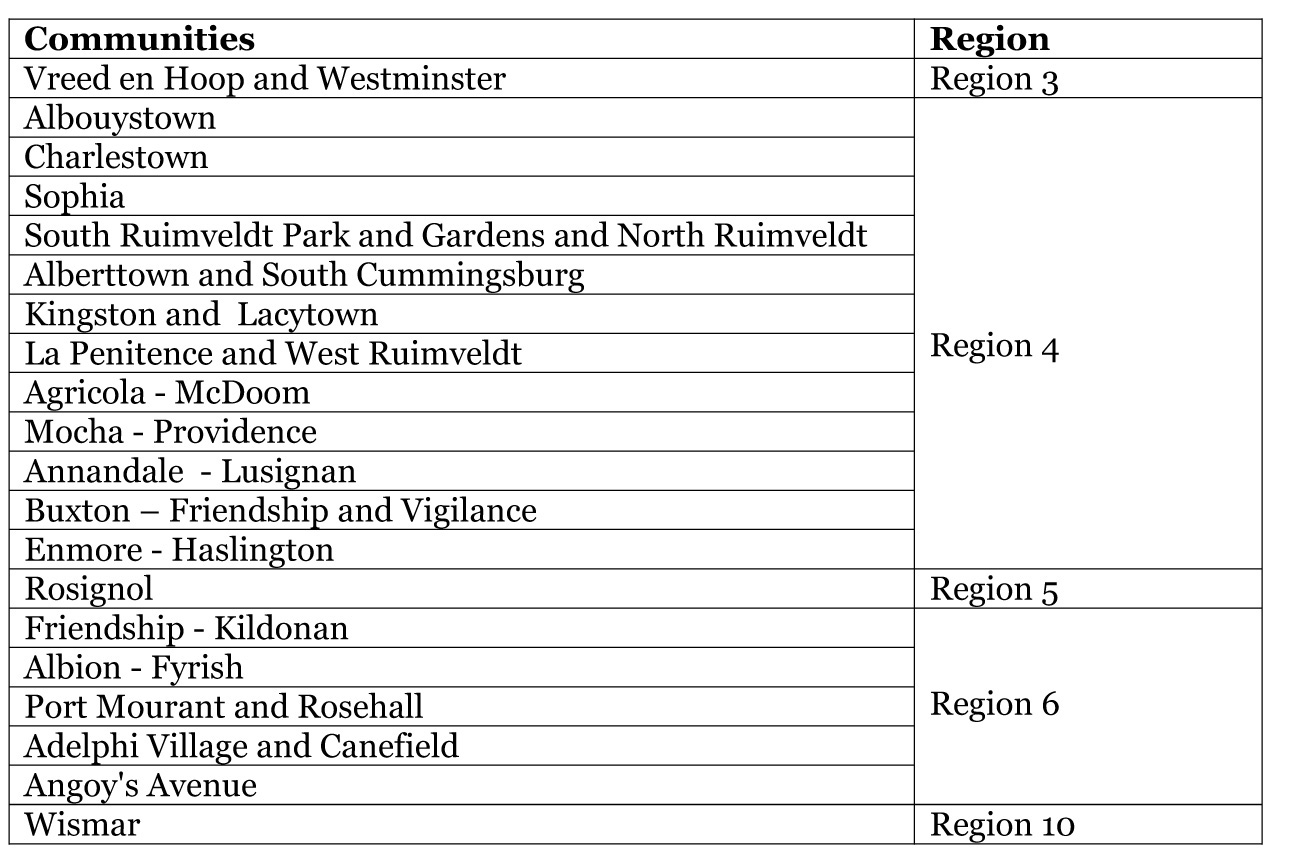Twenty communities in five regions, including large parts of the capital city, have been identified for measures to combat crime and violence under an Inter-American Development Bank (IDB)-funded programme, the Ministry of Public Security announced yesterday.
In a statement, the Ministry said the IDB has given permission for initiation of activities in regions 3, 4, 5, 6 and 10 under the Community Crime and Violence Prevention Component of the Citizen Security Strengthening Programme (CSSP).
The CSSP, it noted, is intended to contribute to a reduction in crime and violence in Guyana, especially in the targeted communities and among youths, by increasing their human and social capacity.
The identified communities are:

It said the short-listed communities were then ranked in terms of suitability for CSSP intervention based on a range of additional criteria, including the percentage of youths and young adults, the percentage of persons who have primary or lower education, the percentage of persons who have no formal qualifications, the percentage of unemployed persons, the population size within each community, and the ethnic composition of each community.
The Ministry said the Community Crime and Violence Prevention Component of the CSSP aims to reduce crime and violence in target communities through: (i) strengthening the participation of residents, agencies, and businesses in community decision-making; (ii) building community leadership in violence prevention; (iii) promoting community cohesion; (iv) improving well-being and socio-economic conditions; (v) influencing the implementation of effective public policies that address risk factors associated with crime and violence; and (vi) promoting recognition of the strengths and capacities of Guyanese communities and groups in preventing violence.
It added that this component will be operated through a number of interrelated interventions, including: (i) creation of community action councils; (ii) implementation of rapid impact projects, community based social interventions, community violence prevention training; and (iii) facilitation of economic inclusion of youths, particularly at risk youths, through vocational and remedial education, job-readiness, job seeking and job placement services, entrepreneurship, mentoring, counselling and psychological skills training, and literacy programmes.






